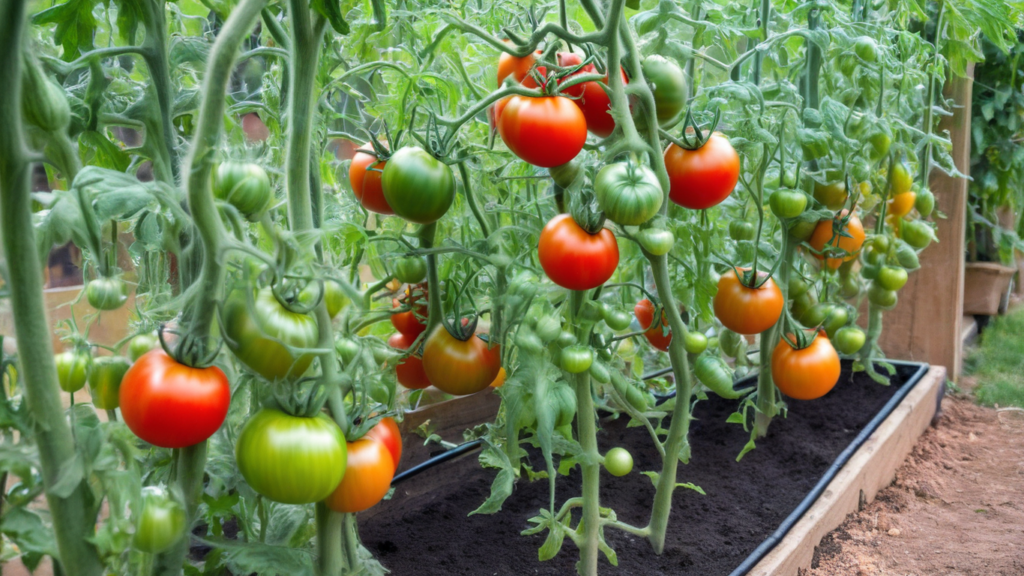Introduction

As August approaches, avid gardeners and newcomers alike recognize it’s a pivotal month for cultivating a thriving garden. Whether you’re looking to enhance your existing green space or preparing for a new planting season, understanding the essential tasks and tips for August can lead to a healthier, more vibrant garden. Let’s dive into the comprehensive steps to ensure your garden is not only surviving but flourishing during this month.
Evaluate Your Garden’s Current State
Begin with a thorough evaluation of your garden. Look for signs of stress in plants, such as wilting, discoloration, or stunted growth. This assessment will guide you in addressing specific needs, whether it’s disease management, pest control, or soil improvement. Take notes on what you observe; this will help in tailoring your gardening efforts effectively.
Addressing Pest Control
August often brings a surge in pest populations. Be vigilant and ready to combat pests like aphids, spider mites, and Japanese beetles. Opt for organic pest control methods such as neem oil or insecticidal soap to keep your garden chemical-free and healthy. Early detection and consistent management are key to preventing these critters from overtaking your green space.
Optimize Watering Practices
As temperatures soar in August, maintaining optimal moisture levels becomes crucial. Water your garden early in the morning to reduce evaporation and ensure that plants receive deep, thorough watering. This not only helps in conserving water but also promotes deeper root growth, which is essential for plant health during heat spells.
Soil Care and Mulching
Refresh your soil by integrating organic compost or manure to enhance fertility. This will invigorate your plants by providing them with essential nutrients needed for growth. Additionally, apply a fresh layer of mulch around your plants. Mulching helps in retaining soil moisture and keeping the roots cool, which is vital during the hot August days.
Pruning and Deadheading
Prune any overgrown or dead branches to encourage new growth. Focus on deadheading spent flowers to promote blooming into the fall. This practice not only tidies up your garden but also redirects a plant’s energy towards producing more blooms and, in some cases, fruits.
Planning Fall Crops
August is the ideal time to start planning and planting fall-harvest crops. Consider vegetables like carrots, beets, and leafy greens, which can be sown directly into the soil during late summer. This will ensure a bountiful harvest in the autumn months.
Lawn Maintenance
Don’t overlook lawn care. August may require adjusting your mowing height. Keeping grass slightly longer can prevent it from drying out too quickly. Additionally, consider aeration if the soil has become compacted over the summer, as this can improve water absorption and root growth.
Adding Seasonal Color
Inject vibrancy into your garden by planting late-summer flowering plants. Options like asters, black-eyed Susans, and marigolds can add a splash of color and vitality to your garden landscape as other blooms start to fade.
Preparing for Pests and Diseases
Keep an eye out for signs of plant disease, such as mildew or blight. Act swiftly to remove affected parts and treat plants with appropriate fungicides, preferably organic, to prevent further spread.
Sustainable Practices
Consider sustainable gardening practices such as installing a rain barrel for water collection or creating a composting area. These practices not only benefit your garden but also contribute to a healthier environment by reducing waste and conserving resources.
Conclusion
August is a month full of potential for your garden. By following these detailed steps, you ensure that your garden is not just surviving but thriving. Remember, consistent care and attention during this month set the stage for a lush, productive fall. So, grab your gardening tools and embrace the joy of gardening this August. Your green thumb will bring vibrant life to your garden, creating a beautiful and rewarding outdoor space.
Tags: garden prep, gardening